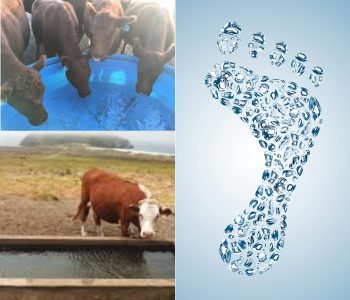“The water footprint” within the cattle industry
How Much Water is Needed to Produce 1 kg of Beef?
The term “water footprint” is in vogue…
In 2002, this figure was first published when the concept of the “water footprint” was established in response to the growing popularity of ecological footprint indicators. While working at the UNESCO-IHE Institute (Institute for Water Education), Arjen Hoekstra designed the water footprint as a way to measure the amount of water consumed and polluted in the production of goods and services throughout the supply chain. Interest in the concept quickly grew after it began to appear in academic literature. Today, the Water Footprint Network works to standardize and promote the concept of the “water footprint.”
- Blue water footprint (related to the consumption of surface or groundwater by animals and irrigation).
- Grey water footprint (related to the water used to clean effluents and recycle them).
- Green water footprint (rainwater).
“Green water” accounts for 93% of the water footprint associated with livestock production.
It’s essential to consider the structure of the water footprint. When we look at the average water consumption for livestock-related activities, more than 90% is green water (rainwater) absorbed by the soil and evaporated by plants, returning to the hydrological cycle with or without livestock.
However, this green water involved in these cycles doesn’t reflect the net water consumption for animal production. The real water scarcity issue may be based solely on blue water. If we remove green water from the equation, the scientific community calculates that between 550 and 700 liters of water are needed to produce 1 kg of beef (combining grey and blue water). The French National Institute for Agricultural Research (INRAE) estimates that about 50 liters of “real” (blue) water are needed to produce 1 kg of beef.
Applying the same approach, we could calculate that pork requires 450 liters, chicken 300 liters, eggs 244 liters, and milk 86 liters per kg, as shown in the table:
Sources:
- Realidadganadera
- theguardian
- M.M Mekonnen et A.Y. Hoekstra, The green, blue and grey water footprint of farm animals and animal products, Value of Water Research Report Series No. 48, UNESCO-IHE
- waterfootprint
- Manual de evaluación de la huella hídrica
- INRAE.FR
- academic.oup
